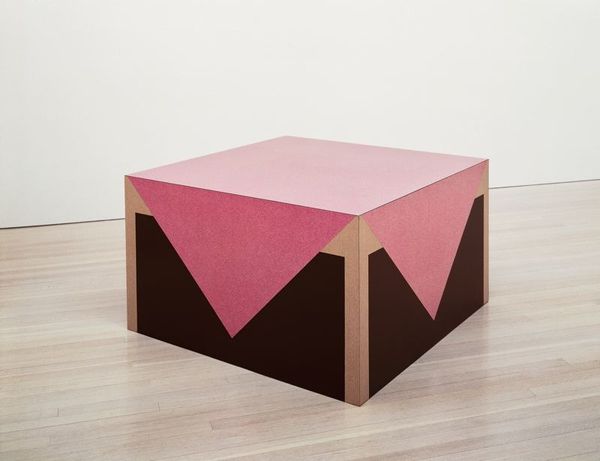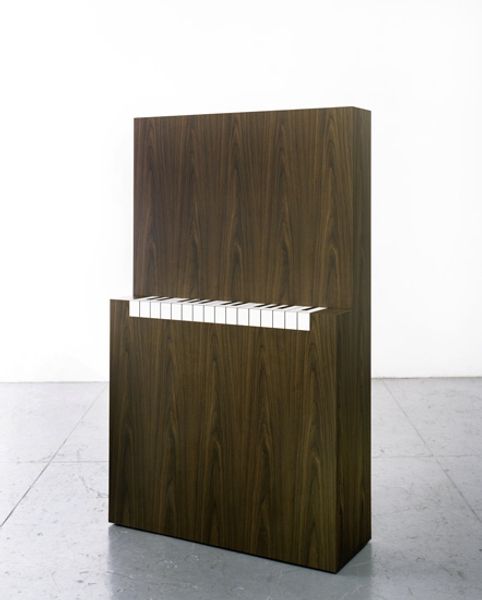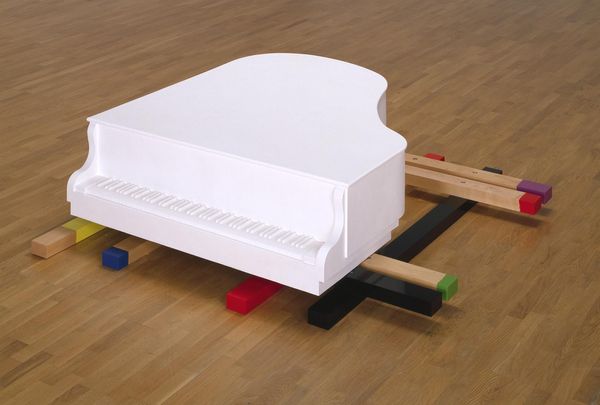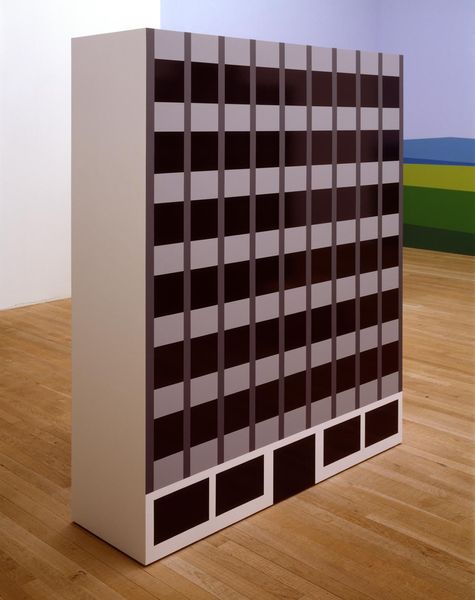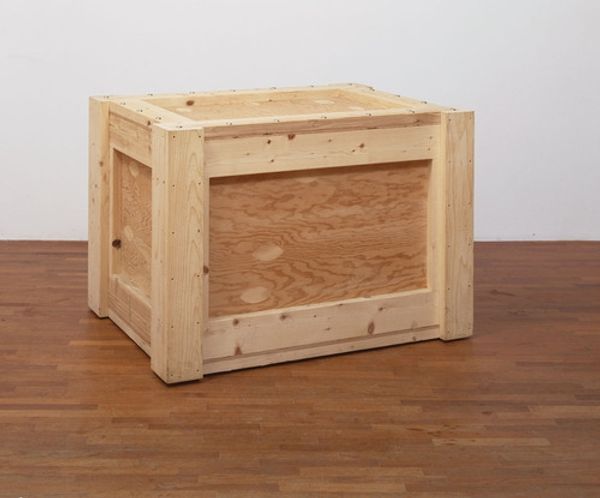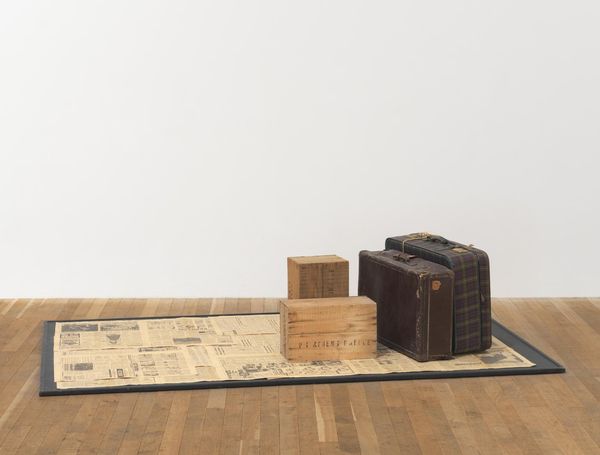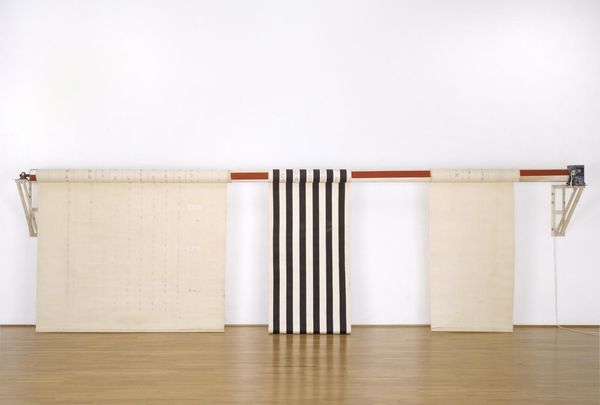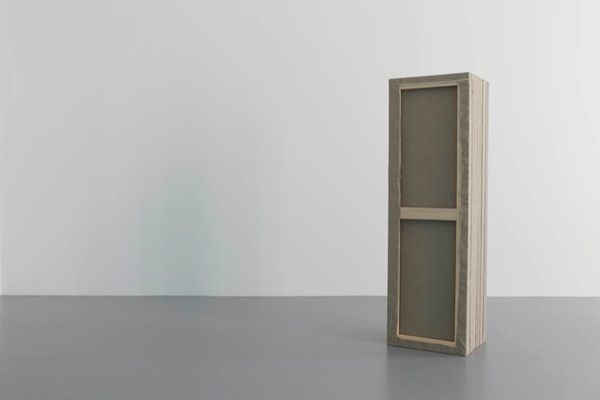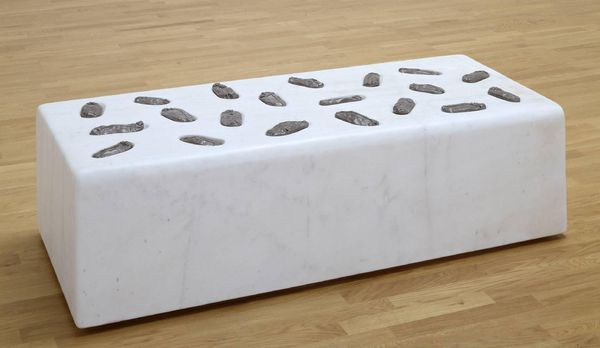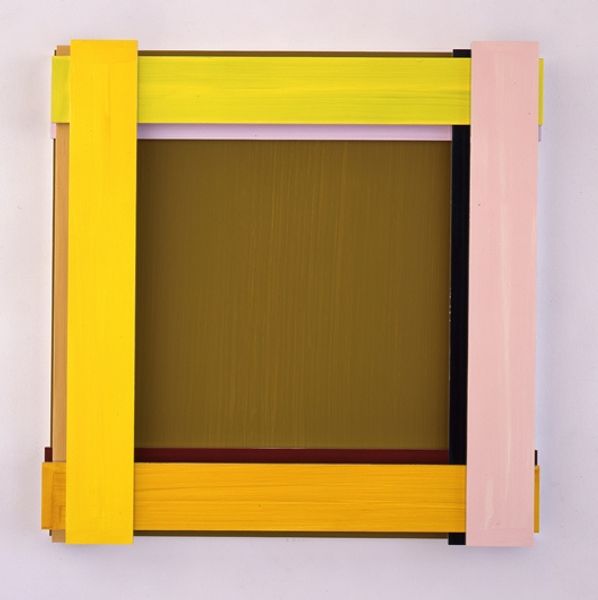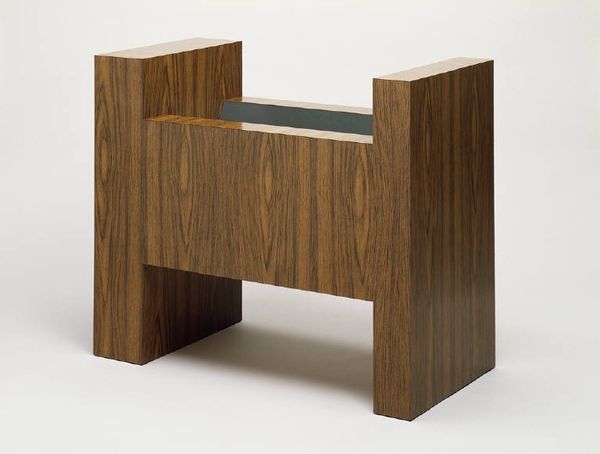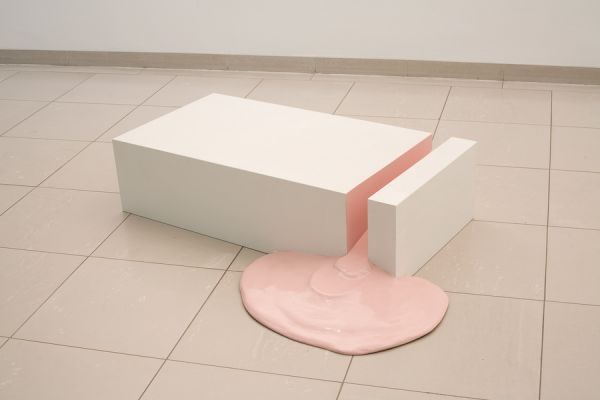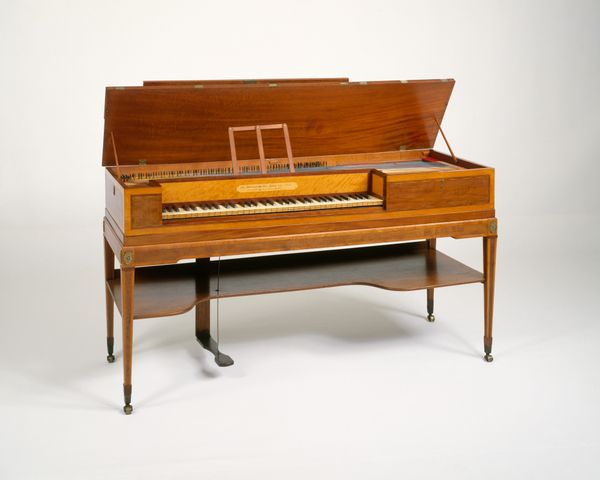
mixed-media, sculpture
#
mixed-media
#
appropriation
#
furniture
#
geometric
#
sculpture
#
abstraction
#
modernism
Dimensions: overall: 88.9 × 200.7 × 121.6 cm (35 × 79 × 47 7/8 in.)
Copyright: National Gallery of Art: CC0 1.0
Editor: This striking piece is titled "Piano/Piano" by Richard Artschwager, dating from around 1963 to 2011, employing mixed-media. It's such a peculiar sculpture of what seems like a piano... or is it? The whole thing feels oddly flattened, geometric. What's your interpretation of this work? Curator: It is peculiar, isn't it? Artschwager's "Piano/Piano" speaks volumes about the social construction of art. Consider the context: he deliberately blurs the line between furniture and fine art. Is it a functional object masquerading as sculpture, or vice versa? What do you think about that ambiguity in the age where “functional art” is now displayed? Editor: That’s a great point. So, he's questioning the role of art institutions in defining "art"? Like, who decides what gets elevated and displayed versus what’s simply used? Curator: Precisely. Think about the implications of placing a potentially usable piano-like object in a gallery setting. It forces us to confront how museums ascribe value and significance. The geometric abstraction further distances it from functionality, reinforcing its status as an art object. What message is sent by showcasing items that look usable yet are presented for observation, or are not? Editor: I see. So, the "Piano/Piano" becomes a commentary on the art market, museums, and our expectations of what art should be. It's like a pop art critique from an institutional perspective. Curator: Yes, and in a broader sense, a critique of Modernism’s desire to escape representation and engage purely with form. By making art that resembles utilitarian objects, Artschwager points out Modernism's complicity with market forces that value uniqueness and “artistic” creation. Editor: That’s a perspective I hadn’t considered! This piece has definitely challenged my assumptions about art and its role in society. I’ll never look at a museum piece the same way again! Curator: Precisely, it's this kind of dialogue and perspective that Artschwager provokes. I think that the sculpture definitely creates discourse and makes you wonder the thought processes behind it, which ultimately enriches one's mind.
Comments
No comments
Be the first to comment and join the conversation on the ultimate creative platform.
